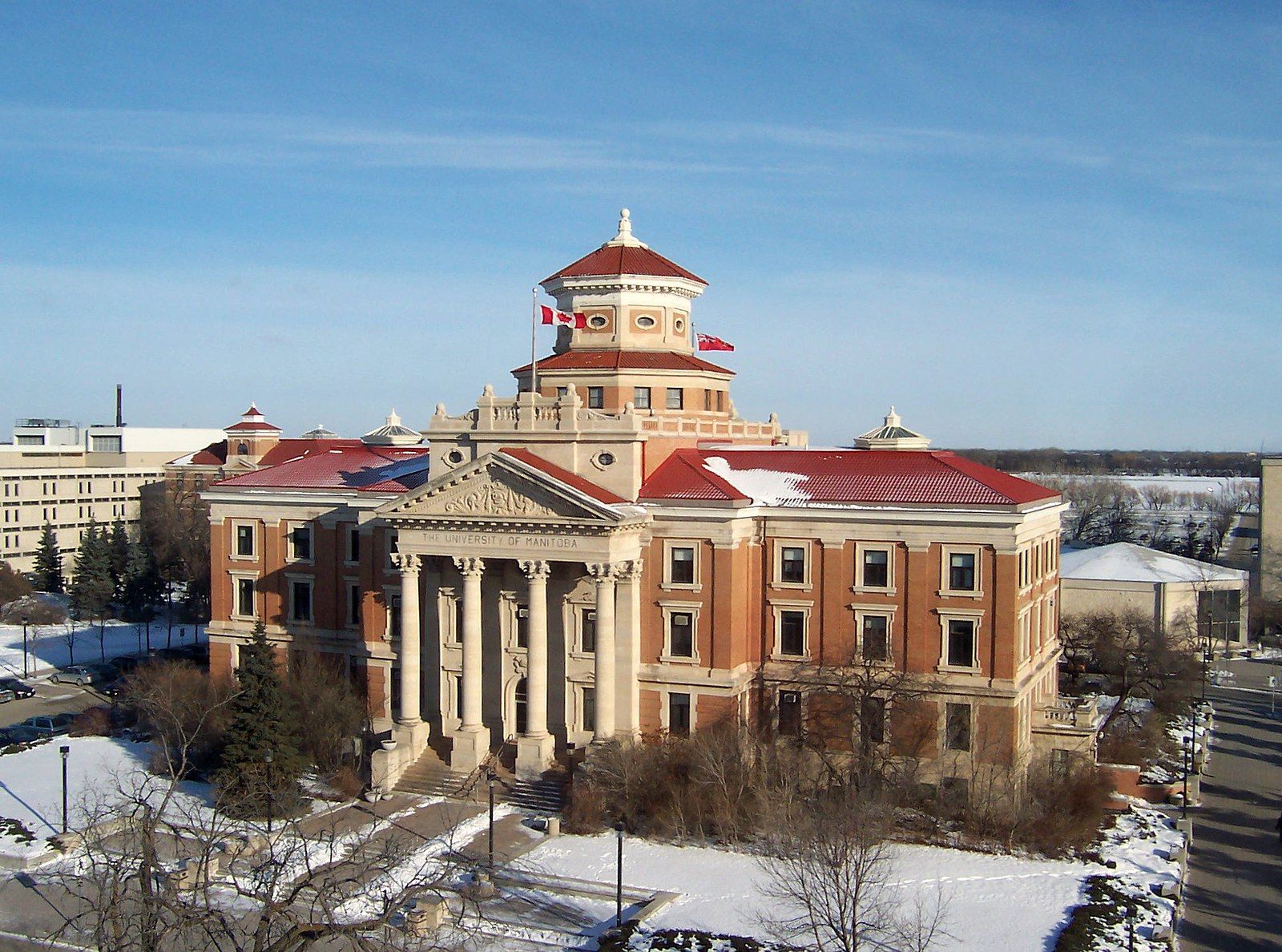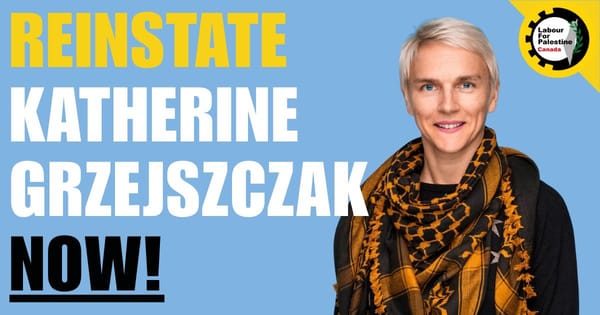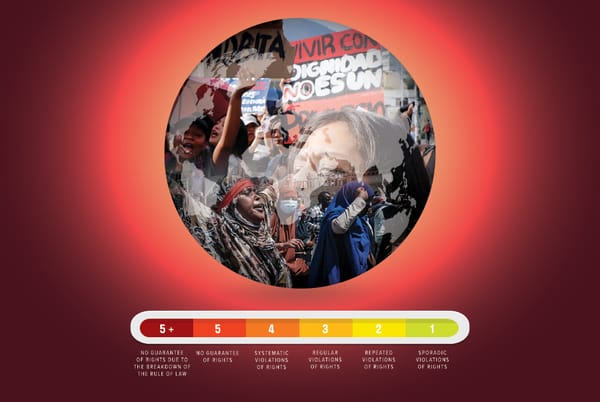
For this week’s Class Struggle newsletter, I spoke with David Camfield about the ongoing faculty strike at the University of Manitoba.
David is an associate professor in the Labour Studies Program and the Department of Sociology and Criminology at U of M, and the author of Canadian Labour in Crisis: Reinventing The Workers’ Movement, We Can Do Better: Ideas For Changing Society, and the forthcoming Future On Fire: Capitalism And The Politics Of Climate Change.
Adam King: To start, can you tell Passage readers a bit about the University of Manitoba Faculty Association (UMFA) and the current strike. Who does the union represent and what are the main issues over which UMFA is striking?
David Camfield: The UMFA represents about 1,200 people, both professorial rank faculty and those classified as instructors — people whose duties are 80 per cent teaching and 20 per cent service. In addition, UMFA represents academic librarians, as well as some student counsellors.
The key issue in this labour dispute is salary. There are some non-monetary issues as well, but salary is crucial. You could say that this is an offensive rather than a defensive strike: it’s an attempt to make significant gains when it comes to salaries. The primary obstacle to a settlement at this point is the Manitoba government’s “bargaining mandate” given to the University of Manitoba.
The non-monetary issues include things such as contiguous vacation time. There are UMFA members who encounter difficulties taking their vacation time because of the way that their workloads are assigned, so some haven’t been able to use the vacation that they’re entitled to. As well, we have a proposal that would protect union members from being compelled to teach online outside of a public health emergency.
AK: Some news coverage of the strike has pointed out that Manitoba struggles with worker retention in education, health care and other sectors. How is this issue shaping the strike?
DC: Recruitment and retention are absolutely central. If you look at the “U15,” the top research universities in Canada, salaries at U of M are almost at the very bottom of the list. There are faculties within the university in which there have been “failed searches” for open positions. You have other instances where new hires come but then don’t stay long. Also, more than a few established faculty members are considering leaving. This isn’t common in some faculties, but it is very significant in other areas.
The university has many professional schools, a large health sciences faculty for example. Some UMFA members have been vocal about the effects recruitment and retention issues have on them and their research — their ability to apply for grants, for example. This has major impacts on the quality of education that members are able to provide, particularly when you have colleagues who can leave the university and go to Saskatchewan and make $30,000 more.
AK: The Conservative government in Manitoba has imposed broad public sector wage restraint through Bill 28. Can you explain Bill 28 and how it has influenced the strike at the university? What is the current status of this legislative curtailment of collective bargaining rights?
DC: In 2016, UMFA was on strike. During that strike, the employer pulled its salary offer from the bargaining table. They didn’t explain why, or what was going on. Subsequently, it became clear that the reason they pulled that offer was because the government had told them to do so. This resulted in an unfair labour practice charge against the employer, which was upheld, and the Manitoba Labour Board issued a penalty against U of M for this.
The courts have also upheld on appeal that the government engaged in unlawful interference in that round of collective bargaining. The remedy for that has yet to be awarded.
The Conservatives were elected in early 2016, so when we were bargaining the government had not yet brought in Bill 28. They were effectively trying to impose on UMFA what would later become Bill 28 — an attempt to restrain public sector wages and salaries.
Bill 28 was then passed but never proclaimed into law. Yet it was treated as though it was the law and affected bargaining in the public sector. It imposed a two-year wage freeze, followed by .75 and then 1 per cent increases in the two subsequent years.
The legislation was then challenged in court. The initial ruling was favourable to labour, as the court ruled that Bill 28 was unlawful. However, the legislation was recently upheld by the Court of Appeal. Now the question is whether the Supreme Court of Canada will hear the case. So, the legislation is there, as before, but it is still not proclaimed into law.
UMFA had this four-year pattern of wage restraint imposed on us. Then in 2020, we had a “salary only” reopening of the collective agreement. We went into bargaining over salary, but the province told the employer, “Give them zero.” The agreement was narrowly ratified. It had no increase to base pay, but a $1,650 so-called “COVID stipend.” But because the university had gone outside of what the government instructed, the government then punished U of M by clawing back funding from the university equivalent to what had been paid out to UMFA members through the stipend.
The government was effectively telling the university, “When we say ‘give them zero,’ we mean zero.”
The president of the university has acknowledged that UMFA salaries are well below where they should be because of Bill 28. But government interference continues, as it did last year, through non-legislative means. The government is mandating that all publicly-funded institutions impose wage restraint. It is government intrusion in the collective bargaining process.
The government knows that the university has the funds to increase salaries more than what it’s currently offering. But they don’t want UMFA to win increases that would raise the expectations of other public sector workers.
AK: Education — higher education in particular — has been under attack in Canada from both federal and provincial governments. Austerity has undermined postsecondary funding, tuition rates have grown exponentially and precariousness has increased among contract instructors. How would you fit UMFA’s strike into this neoliberalization of higher education?
DC: In general, the neoliberalization of higher education in Manitoba has so far been relatively limited. Though, it’s certainly a process that’s underway. We’ve seen cuts in government funding and tuition increases.
The question of the precariousness of the academic workforce is interesting. A number of years ago there were cuts at U of M, and because sessional lecturers (contract faculty), who are members of CUPE Local 3909, are a “flexible budget item,” this resulted in some losing work.. There was an overall reduction in the number of courses offered and an increase in class sizes. In the faculty in which I work, management basically calculated the minimum number of courses required to have programs run. So, while other schools have seen an increase in contract faculty, my impression is that that hasn’t been the predominant trend at U of M.
U of M has a pattern of running “operating surpluses.” They will say, “It’s going to be really tight,” but then find themselves with millions of dollars which they then use for capital investment or other things. The current strike then is being caused much more by the neoliberal provincial government’s public sector wage restraint policy than it is by its education policy.
But the government has set themselves up to pursue the deepest neoliberal restructuring of education that Manitoba has seen. They passed Bill 33, which allows the minister of advanced education, skills and immigration to raise tuition levels for particular faculties or programs within a university. They’re talking about what they call “labour market alignment.” This could look like what has taken place in Australia, where students wanting to study history, for example, found their tuition more than doubling, while students in math, science and agriculture saw their tuition lowered, sometimes by quite a lot. You have students being “steered” in various directions through differential tuition rates.
The Manitoba government is also talking about “performance-based funding.” This involves tying provincial government funding of universities and colleges to some, yet-to-be-revealed, indicators. These could be, for example, graduation rates or post-graduation employment rates. The details are not yet released, but the ingredients are all there for very severe neoliberal restructuring.
The outcome of the current strike will have consequences for the ability of university workers and students to fight this neoliberalization. An UMFA victory would positively contribute to morale and people’s confidence to fight back.
AK: Students at UM, through Students Supporting UMFA, seem to be quite active during this strike. How has solidarity on and off campus shaped the strike thus far?
DC: It’s very inspiring. U of M has been pretty much a deadzone for left-wing student activism. In a very short window of time, students have come together and formed Students Supporting UMFA. They managed to get the student union to take a strong pro-UMFA position, against the wishes of the executive of the student union.
To have such strong student support has been positive for morale among UMFA members. Students Supporting UMFA have been fantastic online — their memes are great! They’ve been successfully countering the employer’s spin. They’ve also been very good at engaging with students and channeling their anxieties and frustrations in a pro-union direction.
On November 15, about two dozen students blocked the entrance to the administration building on campus in protest. We haven’t seen direct action like that at U of M for a number of years.
AK: What lessons, thus far, do you think the UMFA strike holds for other education workers across the country? How can those outside of the University of Manitoba support the strike?
DC: One lesson is that it’s possible to get a strong strike authorization vote in a faculty union at a U15 institution. We had 86 per cent voter turnout and an 85 per cent strike authorization. This is in a university that is not centred on the faculties of arts and science. We have agriculture, architecture, business, health sciences, engineering and other faculties, which give the union a different membership composition than many other faculty unions.
We managed to achieve strong support for the strike even though there has been division among members. In 2020, after we got zero in that “salary reopener,” some anger was directed at the union instead of the government. That led to the election of inexperienced people to the president and vice president positions in UMFA, who only served for two months and then resigned. So there was conflict internally, but in the end this didn’t throw the union off course. Organizing work by active members, combined with salary demands that have very broad support, managed to get UMFA to a position of strong unity and support for the strike.
A big question that we face — and is relevant to other faculty unions — concerns whether a union can force a very right-wing government to relax a bargaining mandate. This is a crucial issue in our strike.
Anything that people outside of U of M can do to pressure the government to relax the mandate and allow free collective bargaining will be helpful. People are welcome to flood Premier Heather Stefanson’s phone lines and email. They can also contact the University of Manitoba president and make it clear that they believe U of M should settle on UMFA’s terms. People who might be entering the academic job market can also tell the employer and the government that they’re not interested in coming to U of M under these kinds of conditions.







